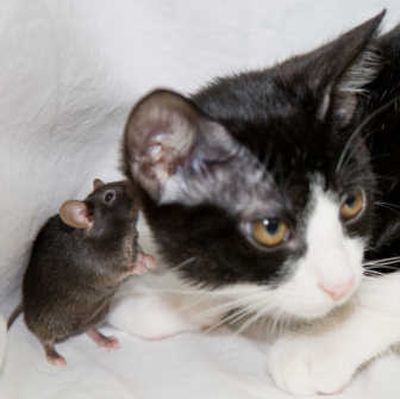New mice have no sense of fear

TOKYO – Cat and mouse may never be the same.
Japanese scientists say they’ve used genetic engineering to create mice that show no fear of felines, a development that may shed new light on mammal behavior and the nature of fear itself.
Scientists at Tokyo University say they were able to successfully switch off a mouse’s instinct to cower at the smell or presence of cats – showing that fear is genetically hard-wired and not learned through experience, as commonly believed.
“Mice are naturally terrified of cats, and usually panic or flee at the smell of one. But mice with certain nasal cells removed through genetic engineering didn’t display any fear,” said research team leader Ko Kobayakawa.
In his experiment, the genetically altered mice approached cats, even snuggled up to them and played with them. Kobayakawa said he chose domesticated cats that were docile and thus less likely to pounce.
Kobayakawa said his findings, published in the science magazine Nature last month, should help researchers shed further light on how the brain processes information about the outside world.
Kim Dae-soo, a neural genetics professor at the Korea Advanced Institute of Science and Technology in Seoul, who was not involved in the research, said Kobayakawa’s research could explain further what fear is, and how to control it.
“People have thought mice are fearful of cats because cats prey on them, but that’s not the case,” Kim said.
“If we follow the pathway of related signals in the brain, I think we could discover what kind of networks in the brain are important for controlling fear.”